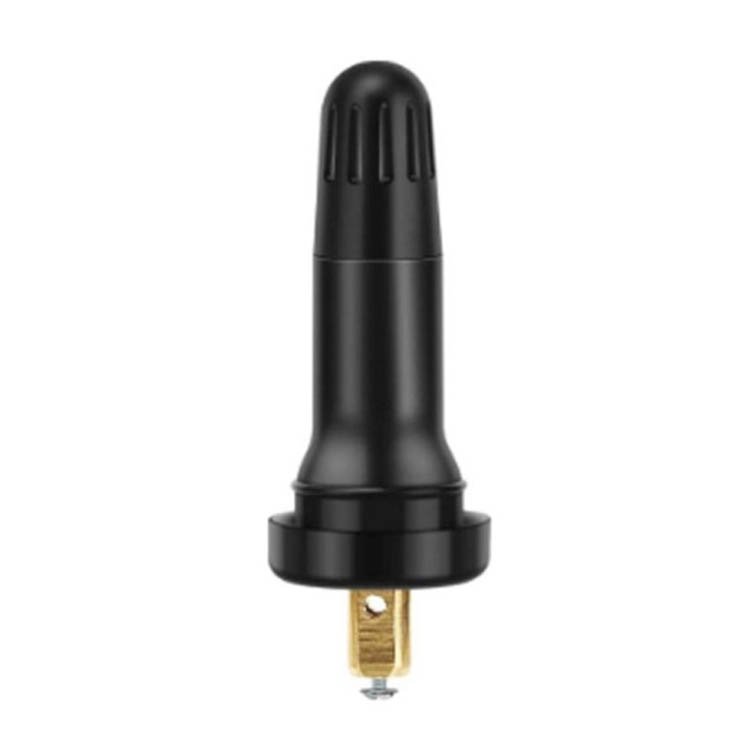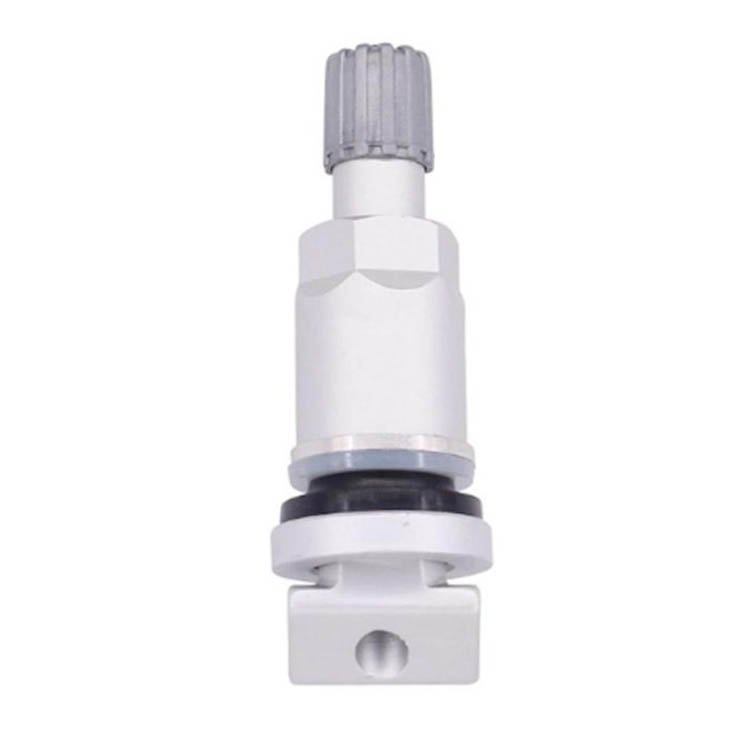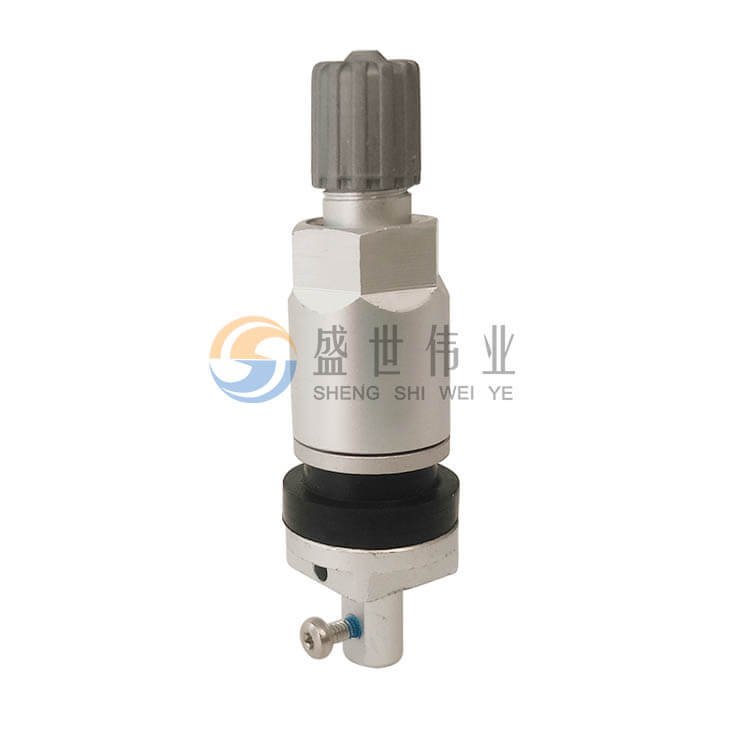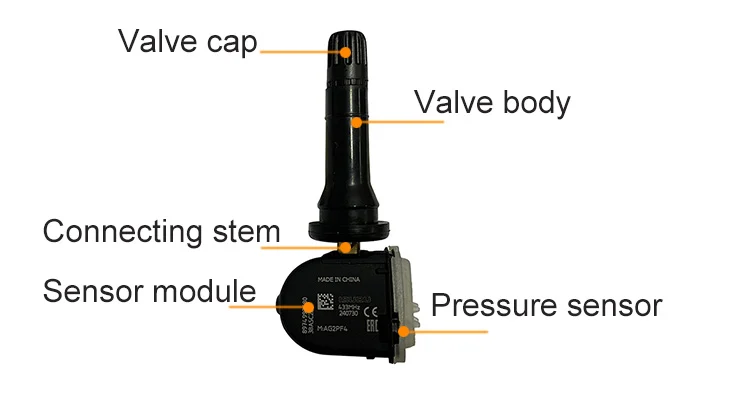What is a TPMS valve and what does it do?
The tire pressure monitoring valve (TPMS valve) is a valve device with integrated tire pressure monitoring function, which is used to monitor tire pressure in real time to ensure driving safety. The following is a detailed analysis:
1. Tire pressure monitoring valve assembly
-
Valve body
-
Made of metal (aluminum alloy/stainless steel) or high-strength rubber, it replaces the traditional valve stem.
-
-
Sensor module
- Pressure sensor: Real-time tire pressure monitoring (accuracy ±0.1 bar).
- Temperature sensor: Monitors internal tire temperature.
- Wireless transmitter: Transmits data via radio frequency (such as 433MHz or 315MHz) to an onboard receiver.
- Battery: Internal coin cell battery (typically has a service life of 5-7 years).
2.Core Functionality
-
Real-time tire pressure monitoring
- Directly displays the exact pressure value for each tire (e.g., 2.5 bar), eliminating visual errors.Low/High Pressure Alarm: Activates a dashboard alert when pressure is abnormal (e.g., <1.8 bar or >3.0 bar).
-
Abnormal temperature warning
-
Tire overheating (e.g. >70°C) may cause a tire blowout and the system will provide an early warning.
-
-
Extend tire life
-
Maintaining standard tire pressure can reduce tread wear (underinflated tires can increase wear by 20%).
-
-
Improve fuel economy
-
If tire pressure is 10% below standard, fuel consumption will increase by approximately 2%.
-
-
Active safety protection
-
Prevents high-speed tire blowouts (approximately 35% of tire blowouts are caused by underinflated tires).
-
3. Type Comparison
| Type | Direct TPMS valve | Indirect TPMS |
|---|---|---|
| Principle | Physical sensors directly measure tire pressure | Estimating tire pressure changes through ABS wheel speed sensors |
| Accuracy | High (±0.1 bar) | Low (only indicates abnormality, no specific value) |
| Cost | Relatively high (single wheel sensor about $40~$100) | Low (depends on existing ABS system) |
| Install | Need to replace the original valve | No hardware modification required |
| Representative models | Standard on high-end cars such as BMW and Mercedes-Benz | Some entry-level models of Volkswagen and Toyota |
4. Installation precautions
-
Dynamic balance calibration
-
The weight of the sensor (approximately 30-50 grams) may affect the tire balance and require rebalancing.
-
-
Battery maintenance
-
Sensors with non-replaceable batteries must be completely replaced (at the end of their life).
-
-
Anti-theft design
-
Some models are equipped with anti-tamper screws to prevent theft.
-
-
Compatibility
-
After-installed TPMS must match the vehicle's receiving frequency (such as universal or vehicle-specific).
-
5. Typical faults and solutions
-
Signal loss: Check sensor batteries or sources of interference (such as electromagnetic devices).
-
False alarm: Calibrate tire pressure reference value (set when tires are cold).
-
Air leakage: Check whether the valve stem seal or sensor is installed in place.
6. Mainstream brands in the market
-
Schrader:OE supply accounts exceeding 50% (GM, Ford, etc.)。
-
Continental:Integrated sensor, supports Bluetooth transmission.
-
Shengshiweiye:High cost performance, suitable for aftermarket。
The TPMS valve is an important component of active safety, effectively preventing tire-related accidents. We recommend choosing direct TPMS and regularly checking the sensor status, especially in winter when low temperatures may affect battery performance.
Related products
 |
 |
 |
 |
TPMS Valve 01 |
TPMS Valve 17 |
TPMS Valve 33 |
TPMS Valve 36 |

